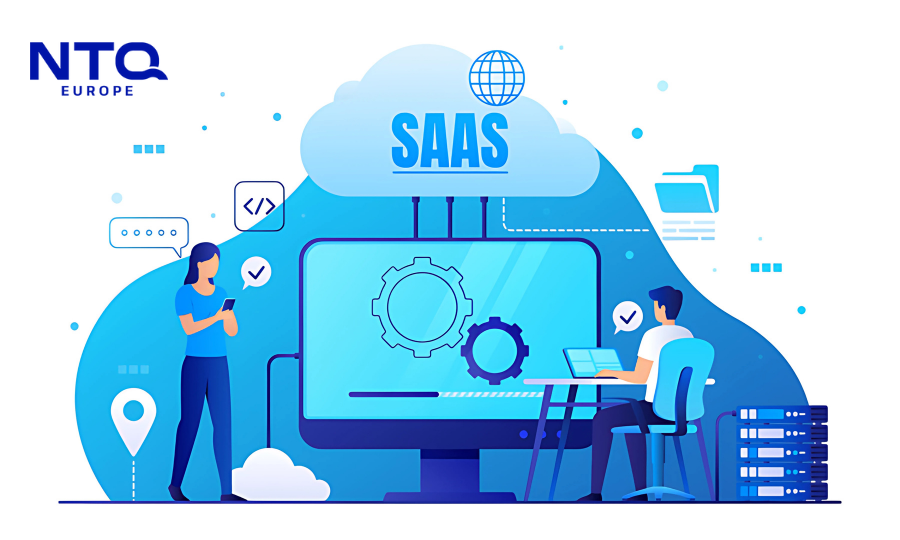1. Introduction to Ecommerce Development
Over the past two decades, ecommerce development has transformed from a niche digital capability to a core business function across industries. As consumer behavior increasingly shifts online, businesses must establish a robust digital presence not only to compete—but to survive.

But ecommerce development today is far more than just building a product catalog and checkout page. It represents a comprehensive digital commerce ecosystem—spanning product management, inventory control, customer experience, payment integration, and cross-platform engagement. Whether it’s a retail giant launching a new brand, or a B2B manufacturer entering the D2C space, developing a tailored ecommerce platform is now a strategic imperative.
The growing demand for ecommerce website development spans industries: from fashion and food & beverage to automotive, industrial manufacturing, and health services. This surge is not only consumer-driven, but also shaped by business needs for automation, personalization, and scalability.
2. Types of Ecommerce Development Models
Not all ecommerce platforms are built the same. Depending on your business goals and audience, the development model should support your operational logic, buyer journeys, and revenue strategies. Here are four primary ecommerce types:
2.1. B2C (Business to Consumer)
This is the most common ecommerce model, where businesses sell products or services directly to the end user through an online store. Platforms like Amazon and Zalando are classic examples. Ecommerce development services in this space emphasize usability, speed, security, and marketing integrations to optimize conversion.
2.2. B2B (Business to Business)
B2B ecommerce platforms facilitate transactions between businesses. These platforms typically support bulk pricing, advanced inventory management, client-specific pricing, and custom workflows. A well-designed ecommerce development solution for B2B companies needs to handle complex logic and systems integration with CRMs, ERPs, and procurement tools.
2.3. C2C (Consumer to Consumer)
This model enables users to sell products or services to each other, often through a marketplace. eBay, Etsy, and OLX are prominent examples. For this type of ecommerce web development, features such as trust mechanisms (reviews, ratings), seamless communication, and escrow-based payments are critical.
2.4. D2C (Direct to Consumer)
D2C empowers brands to sell directly to consumers without intermediaries, fostering tighter control over branding, pricing, and customer engagement. From cosmetics to electronics, D2C has become a dominant force in modern commerce. Here, custom ecommerce development is often favored to reflect brand uniqueness and deliver high-end user experiences.
3. Key Features of a High-Performing Ecommerce Platform
No matter the model, certain features are universally essential for delivering a seamless and successful ecommerce experience. Leading ecommerce development companies prioritize these pillars:
Smart Product & Inventory Management
Your platform should enable real-time stock updates, variant handling, and SKU-level tracking. AI-driven recommendations and predictive stock alerts are now becoming standard in mature platforms.
Smooth Cart and Secure Checkout
The checkout process must be intuitive and fast, minimizing abandonment. Secure payment gateways, multiple payment methods, one-click purchases, and saved preferences can drastically improve conversions.
Responsive Design Across Devices
With over 60% of ecommerce traffic coming from mobile, responsive design is no longer optional. Development should follow a mobile-first philosophy, ensuring flawless display and interaction on all screen sizes.
Powerful Content Management System (CMS)
An integrated CMS allows marketing teams to update banners, create landing pages, and push campaigns without involving developers. Leading ecommerce development agencies often build or customize CMS to match specific operational needs.
Omnichannel Integrations
Modern commerce requires consistent messaging across all customer touchpoints. Integrations with email platforms, social media, chatbots, live chat, and CRM systems ensure a connected user journey.
4. Ecommerce Development Technologies and Tools
A modern ecommerce web development strategy heavily depends on selecting the right technology stack. Businesses must balance performance, scalability, customization, and budget. Below are key components that form the technical foundation of ecommerce platforms.

Popular Ecommerce Platforms
Whether you’re launching a store or migrating from a legacy system, platform selection is crucial. The most widely used platforms include:
- Shopify: A cloud-based, user-friendly solution ideal for fast deployments and small to mid-sized businesses.
- Magento (Adobe Commerce): A powerful open-source platform, widely praised for its flexibility, scalability, and extensibility. It’s often considered the best for businesses seeking high customization—why Magento is best for ecommerce website development is a common discussion in the tech community.
- WooCommerce: A WordPress plugin suited for smaller retailers and content-driven stores.
- BigCommerce: Known for its robust built-in features and low maintenance.
- Salesforce Commerce Cloud: Preferred by enterprises for its personalization and AI-driven capabilities.
These platforms are often part of the offering from a mature ecommerce development agency that tailors implementation to your growth goals.
Programming Languages and Frameworks
Behind the scenes, developers work with a variety of technologies to power ecommerce experiences:
- PHP: Powers many traditional ecommerce platforms like Magento and WooCommerce.
- JavaScript (React, Vue.js, Node.js): Used extensively for creating dynamic UIs and responsive frontends.
- Python: Often used in AI-powered personalization or inventory forecasting modules.
- GraphQL & REST APIs: Enable seamless data exchange between services and applications.
A high-quality ecommerce development company knows how to blend these tools to create a high-performance, maintainable system.
APIs and Microservices
Modern ecommerce systems are moving toward API-first and microservices-based architectures. This approach allows businesses to:
- Scale individual services independently.
- Replace or update features without affecting the whole system.
- Easily integrate third-party services (like shipping providers, ERPs, or payment gateways).
Headless Ecommerce
Headless ecommerce decouples the frontend (what users see) from the backend (where business logic happens). This structure offers:
- Freedom in frontend design (React, Vue, etc.)
- Faster time-to-market for marketing teams.
- Omnichannel delivery across web, mobile, IoT, kiosks, and more.
This setup is particularly valuable for enterprises seeking performance, flexibility, and brand-specific experiences that aren’t limited by theme-based systems.
5. Custom Ecommerce Development vs. Ready-made Platforms
Choosing between custom ecommerce development and using ready-made platforms depends on your business goals, technical expertise, and budget.
Ready-made Platforms
Platforms like Shopify, Wix, or BigCommerce provide:
- Quick deployment.
- Lower upfront costs.
- Hosting and maintenance built-in.
- Easy-to-use admin interfaces.
These platforms are ideal for startups or SMEs who want to go live fast without heavy technical investment.
Custom Ecommerce Development
For businesses with complex needs, developing a bespoke solution provides:
- Full control over features and business logic.
- Tailored integrations with internal systems (CRM, ERP, PIM, etc.).
- Greater scalability and security.
- Brand-differentiated UX/UI.
However, this route requires more development time, higher costs, and ongoing technical management. The decision should consider long-term ROI, not just launch speed.
An experienced ecommerce development company can help evaluate trade-offs and guide you toward the best-fit solution for your stage of growth.
6. Mobile-First and Omnichannel Ecommerce Development
Mobile Commerce is the New Standard
With mobile sales accounting for over 70% of ecommerce transactions globally, mobile optimization is no longer optional—it’s essential.
Mobile-first ecommerce development ensures:
- Fast load times and fluid navigation on smartphones.
- Mobile-optimized checkout flows.
- Tap-friendly UI/UX.
For more advanced strategies, many brands invest in native apps to improve performance, engagement, and push notification capabilities.
Omnichannel: Bridging Online and Offline
Customers expect a seamless experience whether shopping online or in-store. Omnichannel commerce enables:
- Unified cart and inventory between online and offline channels.
- Buy Online, Pick-up In Store (BOPIS).
- Centralized customer data for personalized marketing.
Modern ecommerce development services must support integrations with POS systems, loyalty programs, warehouse management, and customer service portals to deliver this unified experience.
Diverse Payment Integrations
To succeed globally, ecommerce platforms should support a range of payment methods, including:
- Credit/debit cards
- Digital wallets (Apple Pay, Google Pay)
- Localized payment providers
- Cash on delivery (COD)
- QR Code payments
- Buy Now, Pay Later (BNPL) solutions like Klarna or Afterpay
The goal is to remove friction from the final step of the buyer’s journey.
7. Ecommerce Security and Compliance
As ecommerce expands, so do cyber threats and data privacy concerns. A responsible ecommerce development agency prioritizes security and compliance from the ground up.

User Data Protection and Privacy Regulations
Whether you’re operating in the EU, US, or globally, your platform must adhere to legal frameworks such as:
- GDPR (General Data Protection Regulation): Applies to any business serving EU customers.
- CCPA (California Consumer Privacy Act): Protects California residents’ data privacy.
These laws require explicit consent mechanisms, data access transparency, and opt-out options—non-compliance can result in severe fines.
Essential Security Practices
A secure ecommerce website development project should incorporate:
- SSL Encryption: Ensures all customer data is transmitted securely.
- Two-Factor Authentication (2FA): Protects both admin and user accounts from unauthorized access.
- Anti-Fraud Mechanisms: Monitor transactions for suspicious patterns to prevent financial loss.
- Secure Hosting: Reliable servers with DDoS protection and regular backups.
Payment Compliance: PCI DSS
Handling credit card payments? Then your platform must be PCI DSS (Payment Card Industry Data Security Standard) compliant. This includes:
- Secure tokenization of card data
- Regular vulnerability scanning
- Role-based access control
- Encrypted storage of sensitive data
Application-Level Protection
Secure coding practices help guard against common attack vectors like:
- SQL Injection: Prevents attackers from accessing your database through vulnerable queries.
- Cross-Site Scripting (XSS): Blocks malicious scripts from being injected into pages viewed by other users.
- CSRF (Cross-Site Request Forgery): Stops unauthorized actions on behalf of users.
A seasoned ecommerce development company incorporates regular code audits, security patches, and penetration testing into its delivery lifecycle.
8. Choosing the Right Ecommerce Development Partner
Your ecommerce platform is the foundation of your digital business. Choosing the right ecommerce development services provider can significantly impact your ability to grow, scale, and innovate.
Industry Experience and Domain Expertise
Look for partners with:
- A portfolio across various industries: retail, F&B, fashion, B2B, SaaS…
- A deep understanding of online consumer behavior.
- Experience handling high-traffic platforms and complex integrations.
Technical Capabilities and Scalability
A great ecommerce development agency doesn’t just launch your store—it builds it for long-term success. Assess their ability to:
- Deliver scalable, modular codebases.
- Support integrations with CRM, ERP, PIM, and other internal systems.
- Maintain performance under peak loads.
UX/UI and Business Strategy Alignment
Beyond tech, your development partner should:
- Offer custom UX/UI design tailored to your customer journey.
- Align platform functionality with your business goals and sales strategy.
- Implement marketing automation, SEO foundations, and analytics from day one.
9. Why NTQ Europe is the Right Ecommerce Development Partner
In the rapidly evolving digital economy, ecommerce is no longer a competitive advantage—it’s a necessity. Building and maintaining a scalable, secure, and high-converting ecommerce platform requires more than just development skills; it calls for a deep understanding of user behavior, system integration, global compliance, and long-term growth strategy.
This is where NTQ Europe comes in.
As a trusted ecommerce development company with a strong presence across Europe, NTQ Europe specializes in delivering tailored, full-cycle ecommerce solutions. From crafting compelling UX/UI to integrating complex systems like ERP, CRM, and payment gateways, our team ensures your ecommerce platform is not only beautifully designed but also built to scale, convert, and compete.
Whether you’re a retailer moving into D2C, a B2B manufacturer digitizing your sales process, or a startup launching a niche marketplace—NTQ Europe combines technical expertise, strategic consulting, and industry know-how to help you thrive in the digital commerce landscape.
If you’re seeking a long-term ecommerce development partner that understands the European market, complies with strict data regulations (GDPR, PCI DSS), and delivers enterprise-grade quality with agility—NTQ Europe is ready to support your journey.
Let’s build the future of ecommerce, together.



















